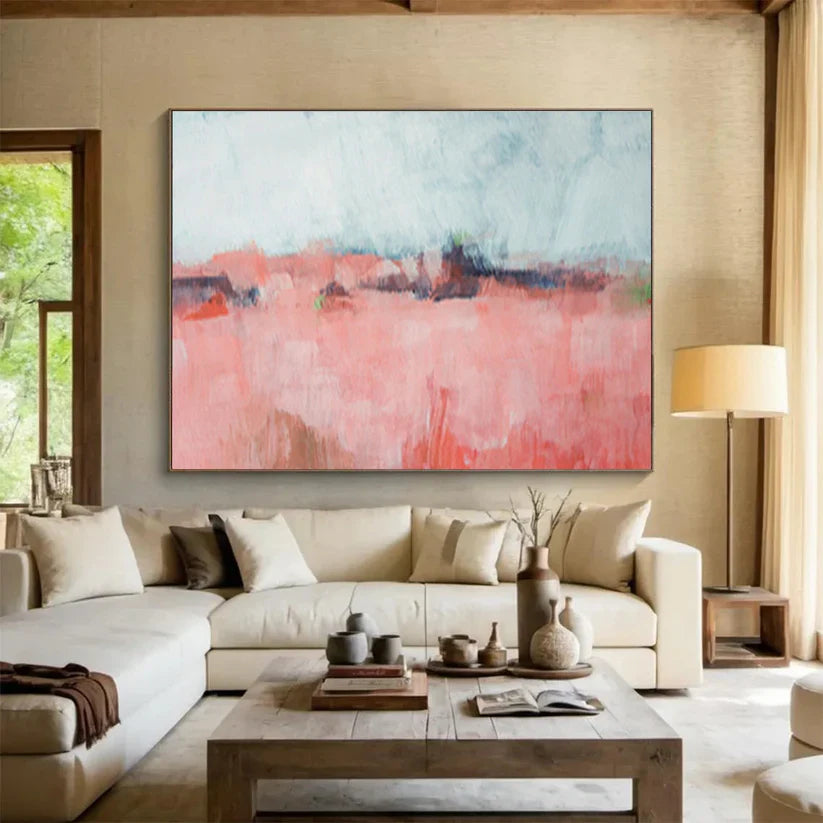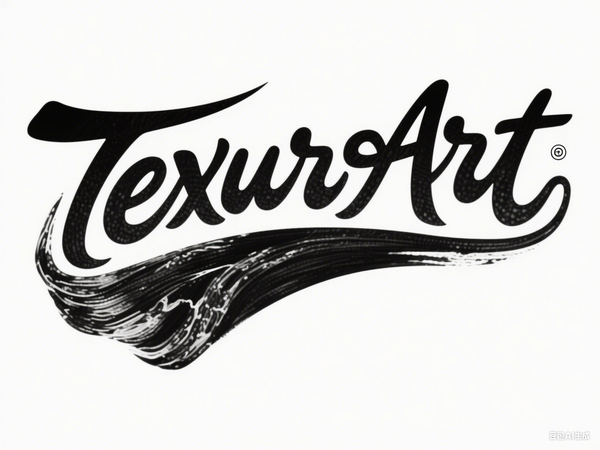
The Enchanting World of Pink Abstract Painting: A Fusion of Emotion and Modernity
Share
Introduction to Pink Abstract Painting
In the realm of contemporary art, few elements captivate the senses quite like the delicate yet powerful hue of pink. Pink Abstract Painting represents a vibrant category where artists harness this color to evoke a spectrum of emotions, from serenity and tenderness to bold femininity and introspection. This genre blends the non-representational forms of abstraction with the symbolic richness of pink, creating works that transcend traditional boundaries and invite personal interpretation. At its core, pink abstract painting challenges viewers to engage with color not just visually, but emotionally, making it a staple in modern interiors, galleries, and therapeutic spaces.
The allure of pink in abstraction lies in its versatility. Unlike more aggressive colors such as red or black, pink offers a softer palette that can soothe the mind while stimulating creativity. Artists working in this style often draw from personal experiences, cultural influences, and psychological insights to layer shades ranging from pale blush to vivid magenta. These paintings might feature swirling forms, geometric patterns, or fluid drips, all unified by pink's gentle dominance. For collectors and decorators, such pieces provide an accessible entry into abstract art, enhancing spaces with a touch of whimsy and elegance. Whether hung in a minimalist living room or a bustling office, pink abstract paintings serve as focal points that spark conversation and reflection.

The Artist's Vision and Creative Evolution
Consider the work of contemporary artist Sophia Rivera, a leading figure in the pink abstract painting movement. Born in 1988 in Barcelona, Rivera grew up amidst the vibrant colors of Mediterranean landscapes and the architectural wonders of Antoni Gaudí. Her early exposure to art came through family visits to museums, where she was particularly drawn to the emotional depth of abstract art. After studying fine arts at the University of Barcelona, Rivera pursued a master's in visual arts in New York City, where she immersed herself in the city's dynamic art scene. It was during this period, around 2012, that she began experimenting with pink as her primary medium, influenced by the feminist art movements and the psychological implications of color.
Rivera's creative journey is marked by a shift from representational portraits to pure abstraction. In her early twenties, she faced personal challenges, including a period of anxiety, which led her to explore art therapy as a means of self-expression. "Pink became my sanctuary," she recalls in a 2023 interview with ArtReview magazine. "It's a color that whispers rather than shouts, allowing layers of emotion to build without overwhelming the canvas." Her process involves intuitive mark-making, often starting with broad washes of pink acrylics or oils, then adding textures through palette knives and mixed media. By 2018, Rivera had established her signature style: large-scale canvases dominated by pink gradients, interspersed with subtle whites, golds, and occasional blues to create depth and movement.
The ideology behind Rivera's pink abstract paintings centers on empowerment and healing. She views pink not merely as a feminine color but as a universal symbol of vulnerability and strength. Drawing from color psychology, which suggests that pink can reduce aggression and promote calmness, Rivera aims to create artworks that foster emotional well-being. Her series "Blush Horizons," launched in 2021, exemplifies this, with each piece exploring themes of transition and renewal. Through exhibitions in galleries like the Tate Modern and private collections worldwide, Rivera's work has gained recognition for bridging accessibility and profundity in contemporary art.
Analyzing the Elements of Pink Abstract Painting
Delving into the content of a typical pink abstract painting, such as those in Rivera's portfolio, reveals a masterful interplay of form, texture, and symbolism. The dominant pink tones often vary in intensity, creating a sense of depth that draws the viewer inward. Lighter pinks might evoke the softness of dawn, while deeper magentas suggest passion or introspection. Abstract forms—be they organic swirls reminiscent of clouds or sharp geometric shapes—allow for ambiguity, encouraging personal narratives. Texture plays a crucial role; impasto techniques add dimension, making the surface almost sculptural, while smooth blends create ethereal effects.
Symbolically, pink abstract paintings often represent inner worlds. In Rivera's works, recurring motifs like fragmented circles symbolize unity amid chaos, reflecting her interest in psychological harmony. The absence of recognizable figures shifts focus to pure sensation, aligning with the principles of abstraction where emotion trumps depiction. This approach not only challenges traditional viewing but also aligns with broader art historical shifts, from the bold experiments of early 20th-century pioneers to today's digital-influenced creations.
From a technical standpoint, artists like Rivera employ layering to build complexity. Starting with a base coat of pale pink, they add successive glazes to achieve luminosity. Mixed media elements, such as embedded fabrics or metallic powders, enhance tactility, making the paintings interactive under different lighting. In terms of composition, balance is key; asymmetrical arrangements create dynamic tension, while harmonious color schemes ensure cohesion. Overall, these elements combine to produce artworks that are both visually striking and emotionally resonant.

Integrating Pink Abstract Painting into Everyday Spaces
The versatility of pink abstract painting makes it ideal for various environments. In home decor, these pieces add warmth to neutral palettes, transforming bedrooms into serene retreats or living rooms into creative hubs. For instance, a large pink abstract canvas above a sofa can soften harsh lines and introduce a pop of color without dominating the space. In professional settings, such as therapy offices or wellness centers, the calming properties of pink promote relaxation, aligning with therapeutic goals.
Collectors appreciate how pink abstract paintings evolve with trends. In minimalist interiors, they provide subtle elegance; in eclectic spaces, they offer bold statements. Sustainability is another draw—many artists now use eco-friendly pigments, appealing to environmentally conscious buyers. When selecting a piece, consider scale and lighting; larger works suit expansive walls, while smaller ones fit intimate nooks. Maintenance is straightforward: dust gently and avoid direct sunlight to preserve vibrancy.
Customer experiences underscore this appeal. Designer Elena Torres shares, "I incorporated a pink abstract painting into a client's minimalist apartment, and it instantly brought life and tranquility to the room." Homeowner Marcus Lee adds, "As someone who works in a high-stress job, having this artwork in my study helps me unwind— the soft pinks are like a visual meditation." Gallery curator Anna Kim notes, "These paintings sell quickly because they resonate on an emotional level, blending beauty with meaning."
Broader Cultural and Historical Context
Pink abstract painting sits within a rich tapestry of art history. Emerging from mid-20th-century movements, it builds on the foundations of abstraction, where artists sought to express the inexpressible. Pink's cultural associations— from innocence in Western traditions to prosperity in Eastern ones— add layers of interpretation. In feminist art, pink reclaims stereotypes, turning softness into strength. Contemporary iterations often incorporate digital elements, like AI-generated patterns, pushing boundaries further.
Globally, pink abstract works appear in festivals and biennales, reflecting diverse perspectives. In Asia, artists might infuse pink with spiritual connotations; in Europe, with romanticism. This genre also intersects with social issues, such as mental health awareness, where pink symbolizes hope. As art markets evolve, pink abstract painting remains accessible, with prints and originals catering to varied budgets.
Conclusion: Embracing the Power of Pink
In essence, Pink Abstract Painting encapsulates the magic of color and form, offering endless possibilities for expression and enjoyment. Through artists like Sophia Rivera, this genre continues to inspire, heal, and beautify our world. Whether as a personal treasure or a shared experience, these paintings remind us of art's profound impact on the human spirit.
Frequently Asked Questions (FAQ)
What defines a pink abstract painting? A pink abstract painting is characterized by non-representational forms dominated by shades of pink, focusing on emotion and interpretation rather than literal subjects.
How can pink abstract paintings benefit mental health? They can promote calmness and creativity, often used in therapeutic settings to aid emotional expression.
What sizes are typically available for pink abstract paintings? Options range from small 12x12 inch pieces to large 60x40 inch canvases, depending on the artist or retailer.
Is pink abstract painting suitable for all decor styles? Yes, its versatility allows it to complement minimalist, bohemian, or modern aesthetics seamlessly.
How do I care for a pink abstract painting? Keep it out of direct sunlight, dust regularly with a soft cloth, and maintain stable humidity levels.
Can I commission a custom pink abstract painting? Many artists, including those specializing in this style, offer commissions tailored to your preferences and space.
(Word count: approximately 1510)
